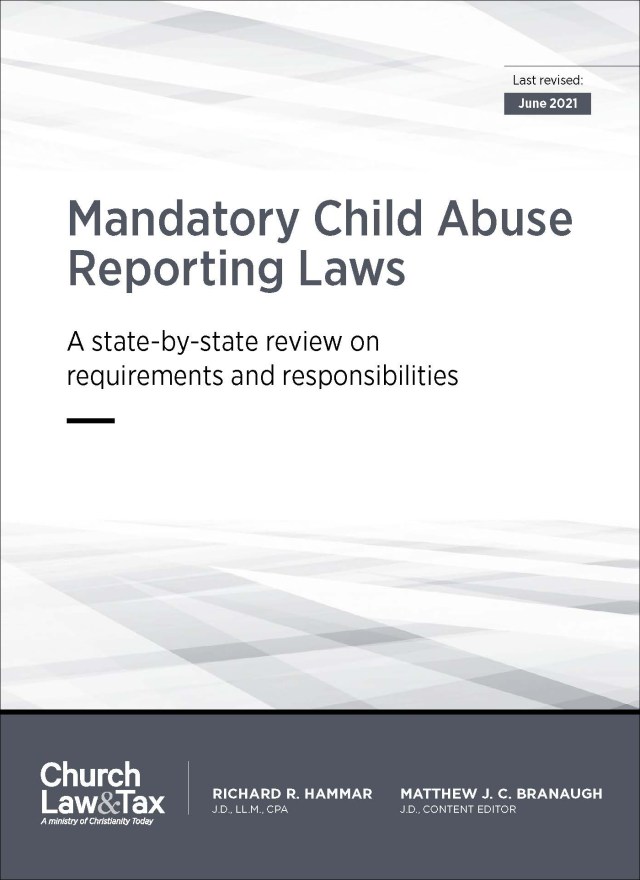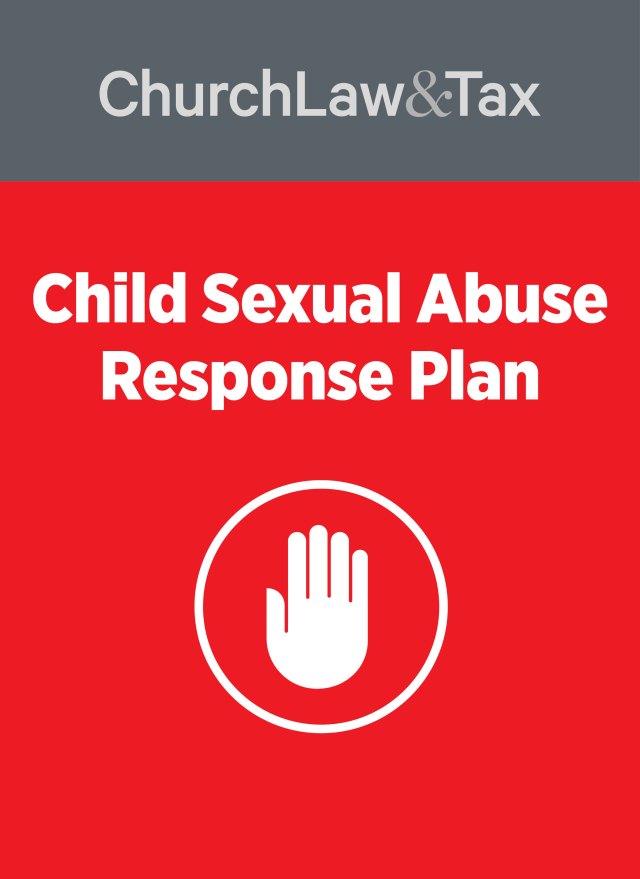• Key point. Church liability policies often deny coverage for intentional or criminal acts. However, such an exclusion generally will not affect the church’s coverage when it is sued on the basis of negligence by a victim of an intentional or criminal act by a church worker.
A federal appeals court ruled that a church insurance policy provided coverage for alleged acts of child molestation. An adult male (the “victim”) sued a Catholic diocese, claiming that he had been “regularly and repeatedly sexually molested” by a priest. The acts of molestation allegedly began in 1976 when the victim was six years old, and ended in 1989 shortly before the priest’s death. The victim asserted that the diocese “knew or should reasonably have known of the priest’s dangerous and exploitive propensities as a child sexual abuser.” Despite such knowledge, the diocese negligently employed and failed to supervise the priest properly, and failed to provide adequate warning to the victim and his family. The church had a number of insurance policies in effect from 1976 to 1989. The victim eventually entered into an out-of-court settlement with the diocese and two insurance companies. One insurer, that provided insurance from 1980 through 1984, did not participate in the settlement. A question arose as to the victim’s legal right to seek recovery for his damages under this insurer’s policy. The policy in question was a comprehensive general liability insurance policy. It contained a “bodily injury liability” section specifying that the insurance company would “pay on behalf of the insured all sums which the insured shall become legally obligated to pay as damages because of bodily injury or property damage to which this insurance applies, caused by an occurrence.”
In the definitions section of the policy, “occurrence” was defined as “an accident, including continuous or repeated exposure to conditions, which results in bodily injury or property damage neither expected nor intended from the standpoint of the insured.” In addition, the policy provided that “[t]he insurance afforded applies separately to each insured against whom claim is made or suit is brought, except with respect to the limits of the company’s liability.”
The insurance company insisted that this policy did not provide coverage, because the victim’s alleged injuries were not caused by an “occurrence,” as that term was defined in the policy. A federal district court agreed. It acknowledged that the victim’s injuries constituted “bodily injury” under the terms of the policy, but it concluded that under Minnesota law “the intentional acts of [the priest], not the negligence of the diocese,” resulted in the victim’s injuries, and so an “accident” had not caused the victim’s injuries as required by the policy’s definition of “occurrence.”
The victim appealed, and a federal appeals court reversed the district court’s ruling. The appeals court relied on an earlier decision by a Minnesota appeals court. Mork Clinic v. Fireman’s Fund Ins. Co., 575 N.W.2d 598 (Minn.App.1998). In the Mork case, a physician was accused of having sexually abused several patients during medical examinations. The patients sued the physician, his clinic, and the clinic’s insurer. The insurer participated in settlement agreements with two of the patients, and then refused to defend or indemnify the clinic. The clinic, which had been sued for negligent hiring and supervision, asked a trial court to determine the insurer’s responsibility to pay claims relating to the physician’s misconduct under the terms of the policy. The court ruled that the policy did cover the physician’s acts, and the insurer appealed. It noted that the policy provided coverage for claims of bodily injuries “caused by” an “occurrence,” which was defined as “an accident, including continuous or harmful repeated exposure to substantially the same harmful condition.” The insurer insisted that the injuries sustained by the patients were caused by the physician’s intentional sexual abuse, which, it claimed, was not a covered “accident” or “occurrence.” In rejecting this position, the court concluded that “the immediate cause of the victims’ injuries is not the only cause, and that the victims had a legitimate cause of action against the employer if they could establish, as they claimed, that [the clinic] was negligent in the hiring, supervision, or retention of their employee.” The court also pointed out that “[t]he injuries would not have occurred if [the clinic] had not hired the employee and offered him as its agent to provide professional medical services to the victims.”
The federal appeals court agreed with this analysis, and concluded that under Minnesota law the diocese was entitled to indemnification under the insurance policy in question.
Application. This case provides church leaders with important information regarding church liability insurance policies. Consider the following: (1) Church liability insurance policies generally cover bodily injury claims, subject to policy limits and exclusions. (2) Only those bodily injury claims caused by an “occurrence” are covered under the typical church liability insurance policy. An occurrence generally is defined to exclude intentional or criminal acts. Even if there is no specific exclusion, this type of coverage may be legally precluded on the ground that it would violate public policy. (3) Since acts of sexual misconduct are by nature intentional, and often criminal, the offender often is not covered by a church’s liability insurance policy. There are exceptions to this rule. Some policies cover the alleged offender under certain conditions (for example, if he or she is found innocent of criminal wrongdoing). (4) As the court pointed out in this case, the “immediate cause” of a sexual misconduct victim’s injuries is the misconduct of the perpetrator. However, this is not the only cause. The church often is sued on the basis of its own negligence in the selection, supervision, or retention of the offender. These theories of liability generally do not involve intentional misconduct, and so they will constitute an “occurrence” under the church’s liability insurance policy. This means that the insurer will be obligated under the policy to provide the church with a legal defense and pay any judgment against the church up to the policy limits. (5) The diocese was able to produce insurance policies for many of the years from 1976 though 1989. It is absolutely essential for church leaders to retain their liability insurance contracts, since these are the documents that will demonstrate an insurer’s obligation to defend and indemnify the church. Insurance contracts should be retained permanently, since victims of sexual (and other) misconduct or negligence may be able to sue the church many years after their alleged injuries. American Employers Insurance Co. v. Doe 38, 165 F.3d 1209 (8th Cir. 1999). [Seduction of Counselees and Church Members, Negligence as a Basis for Liability]
© Copyright 1999 by Church Law & Tax Report. All rights reserved. This publication is designed to provide accurate and authoritative information in regard to the subject matter covered. It is provided with the understanding that the publisher is not engaged in rendering legal, accounting, or other professional service. If legal advice or other expert assistance is required, the services of a competent professional person should be sought. Church Law & Tax Report, PO Box 1098, Matthews, NC 28106. Reference Code: m50 m67 m10 m86 c0399




